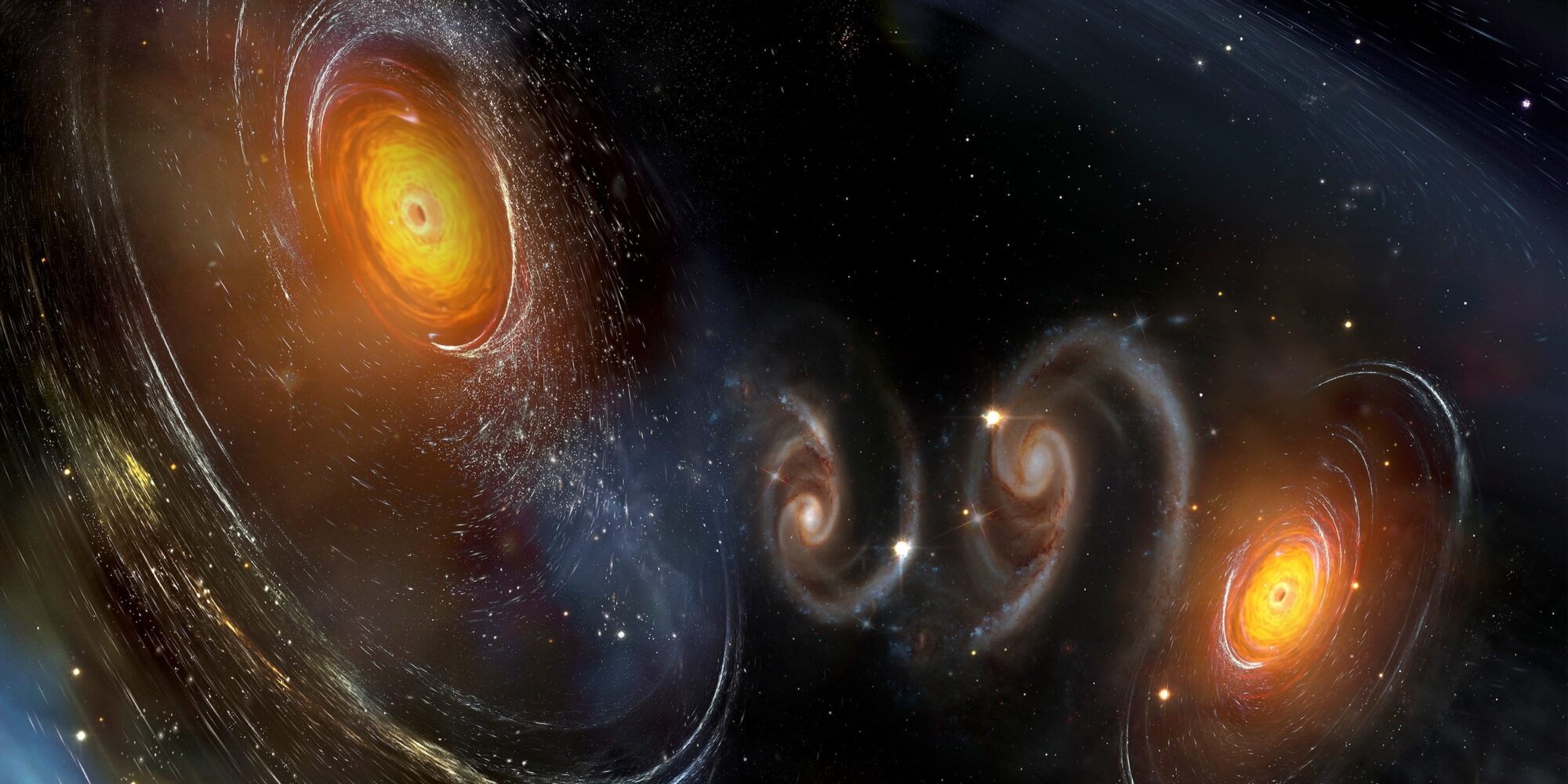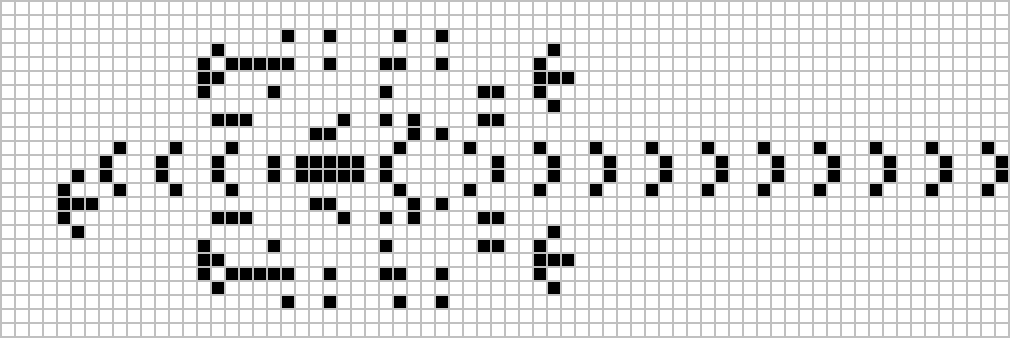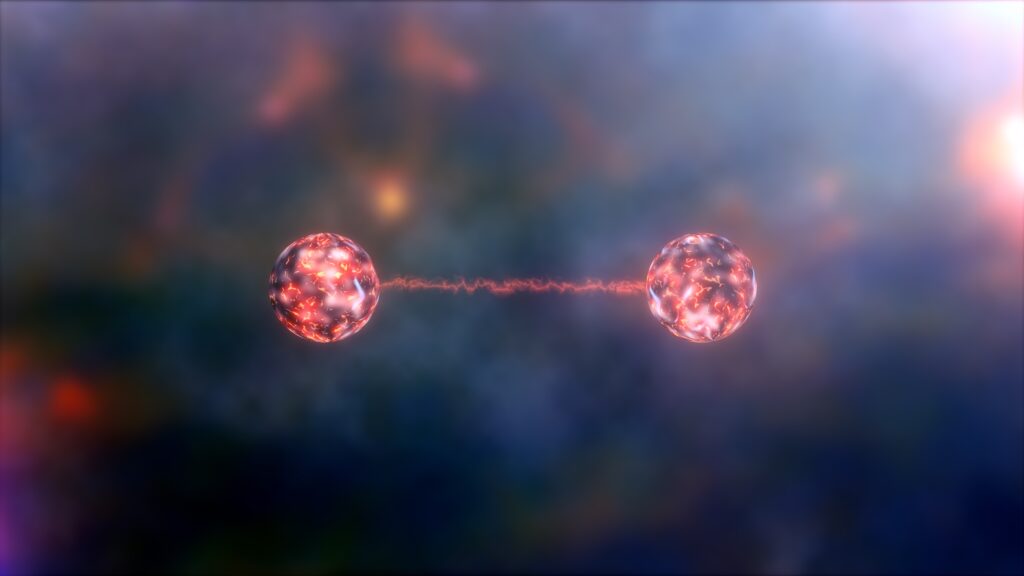Entropy is in the eye of the beholder
Reading | Physics
![]() Gabriel Proulx, BS, DMD | 2023-09-24
Gabriel Proulx, BS, DMD | 2023-09-24

Entropy is linked to the computational bounds of conscious experience, rather than being a property of objective systems, argues Dr. Proulx in this intriguing essay. Increasing entropy is but an artifact of an observer’s inability to keep track of information, resulting from a serial downsampling of an infinitely complex reality. This essay synthesizes seemingly disparate ideas to offer a coherent and promising perspective on one of the greatest mysteries of science—the second law of thermodynamics—linking it to fundamental consciousness.
Introduction
The Second Law of Thermodynamics, herein referred to as the Second Law, states that the entropy or disorder of closed systems inevitably increases with time. This paper instead argues that this phenomenon is actually a perception of conscious agents due to their serial downsampling of an infinitely complex reality. Additionally, it argues that entropy is linked to the bandwidth constraints or computational bounds of conscious experience, rather than being a property of objective systems. Lessening these constraints correlates with experiencing decreased entropy. Proper understanding of the Second Law requires a discussion of consciousness and the computational bounds of conscious agents.
Entropy describes macrostates and microstates. A macrostate gives an overall or coarse-grained description of a system, while a microstate describes a specific configuration of particles within the system. As a given macrostate can be consistent with numerous microstates, systems shift from macrostates with fewer possible microstates to macrostates with more possible microstates.
Consider a container divided into two, with an initial macrostate of 100 gas molecules on one side and a vacuum on the other. After the separator is removed, the container settles in a macrostate with roughly 50 gas molecules in each section. While theoretically possible that the system could have stayed in the initial macrostate, it’s number of associated microstates are vastly outnumbered by the microstates that satisfy the macrostate with even distribution. The system moved from a low entropy macrostate to a high entropy macrostate, from order to disorder.
In the 1867 thought experiment “Maxwell’s Demon,” a theoretical creature controls a massless door separating two sides of a chamber. By selectively sorting the gas molecules based on velocity, it could create a temperature gradient. While this would seem to violate the Second Law, the information gathering of velocities would expend energy and increase entropy. Nevertheless, this thought experiment highlights information’s role in thermodynamics. Recent challenges to the Second Law have all revolved around information and consciousness.
Sabine Hossenfelder
In a June 2023 video, Hossenfelder equates entropy with the information known about a system. Entropy is defined as the Boltzman’s constant multiplied by the natural logarithm of the number of microstates. As the natural logarithm of one is zero, the entropy of a system with only one microstate would be zero. In other words, if an observer knew all information regarding a system, there would be only one microstate, and the system would be devoid of entropy. This illustrates that entropy describes the information a conscious agent knows about a system, rather than being an inherent property of systems.
Hossenfelder then posits that all systems are technically in only one microstate. When they change, they are still in only one microstate, eliminating an increase in entropy. She runs through the above example of gas molecules spreading out from an initial state on one side and states, “entropy increases, because we lose access to information.” However, she explains, “there are always macrostates that will turn a high entropy system into a low entropy system,” and demonstrates that if one knew the locations of the molecules, they could draw a custom divider around molecules, creating a gradient from one side to the other, thus defining a low entropy macrostate. She concludes by stating that entropy “isn’t a fundamental property of nature,” and that she believes, “as the universe gets older and entropy increases according to us, new complex systems will emerge that rely on different macrostates … and for those complex systems, call them living beings, the entropy will decrease again.”
While a cogent argument, Hossenfelder leaves a lot unaddressed, failing to recognize the role of consciousness, explain the intersubjective nature of entropy by separate conscious agents, discuss the implications for the arrow of time, or hypothesize why we lose access to information. These require the robust philosophical framework of idealism.
Stephen Wolfram
As a physicist and computer scientist, Stephen Wolfram has sought to explain the laws of physics as emergent phenomena arising from simple rules. He works with cellular automata, or computational models involving grids of cells. These models have an initial state, or a row of cells with different shading, and depend on simple rules to determine the shading in successive rows. Some rules immediately appear to produce random behavior, others gradually descend into apparent randomness, some form nested patterns, and yet others have a mix of organization and apparent random behavior. Yet, all are deterministic at their core, without any random behavior, showing how complex behavior can emerge from simples of rules.
In April 2021, Wolfram wrote that “In a sense our universe is fundamentally computational all the way down.” He then goes on to state:
Even simple programs can produce immensely complex behavior… [which] is usually computationally irreducible… It can’t be predicted by anything much less than just running the explicit computation that produced it. And at the level of the machine code, our models very much suggest that our universe will be full of such computational irreducibility.
He then introduces how computational bounds of observers determine the laws of physics:
It’s about what a computationally bounded observer (like us) can see in all this computational irreducibility… Within the computational irreducibility there are inevitably slices of computational reducibility… [which] make it possible for us—as computationally bounded entities—to identify meaningful scientific laws and to do science.
Another key concept in his models is the ruliad, “the entangled limit of everything that is computationally possible: the result of following all possible computational rules in all possible ways.”
In essence, Wolfram compares the universe to the ruliad, the set of all computational possibilities of simple rules. These rules are irreducibly complex, meaning there are no shortcuts to arrive at the full results without computing them. However, there are pockets of reducibility, or patterns that can be observed and leveraged to gain some predictive understanding of the rule. Computationally bounded observers, like humans, exist as subsets of the ruliad, or universe. While unable to comprehend the totality of the ruliad, these observers can recognize patterns and heuristically model the ruliad. The level to which they can reduce the apparent chaos to predictable patters depends on their computational bounds, essentially the computing power of their observing perspective.
In a paper from February 2023, Wolfram outlines a similar position to Hossenfelder’s, positing that what we experience as the Second Law is due to the irreducible complexity of the universe. Owing to our computational bounds as observers, we can only model a certain percentage of the behavior of the ruliad. From moment to moment, the deficit between our computational bounds and the irreducible complexity of the universe adds up. Despite pockets of reducibility, the patterns exceeding our computational bounds are interpreted as randomness and compound with time. This leads to what we experience as the Second Law. Despite our perception of randomness within the ruliad, by containing all computational possibilities, it is the opposite of randomness. It is completeness.
Observers are contained in and experience the ruliad from within. As such, they contain a subset of its computational power, leading to computational bounds. Revisiting the rows of cellular automata, even if one recognizes much of the pattern and predicts behavior with ninety nine percent accuracy, each row compounds the bandwidth constriction. The ninety nine percent accuracy is applied continually to the results of the previous prediction, and the overall accuracy approaches zero with time. In some sense, this can be compared to the phenomenon of endlessly photocopying a photocopy.
While cellular automata illustrate why information is lost with time, other models illustrate how it is experienced. Multiway graphs are upside down tree graphs representing all possible paths of a system, akin to the many-worlds model. Each node in the graph represents a complete state of the system, with lines between them indicating transitions from one state to another. As computationally bounded observers, we begin at any one node with a high fidelity, or fine-grained understanding of that state, though not perfect. This is akin to knowing all the gas molecules are on one side of the container. Time is the “computational process of repeatedly updating these connections in all possible ways.” As it elapses, we now have to update our model from the initial node to now contain the many possible nodes below that initial model, all representing possible states that could come next. However, we are now storing many nodes with the same computational power that previously held just one. This necessitates progressively downsampling our model to increasingly more course-grained versions. In the gas scenario, we eventually end up only knowing the pressure of the gas in the container, with no knowledge of the gas molecules’ locations. This is akin to an internet connection streaming a single movie at 8K resolution, but later dropping to 4K, 1080p, and finally 720p as more and more movies are opened simultaneously on the same bandwidth.
Wolfram’s models illustrate how increasing entropy is not a trait of systems, but an experience of observers downsampling a high-fidelity stream of reality due to computational bounds. Applied repeatedly in each moment, this degrades fine-grained knowledge about the state of a system to course-grained knowledge. Wolfram discusses consciousness, but doesn’t come to firm conclusions. He does discuss what consciousness might be like at different levels, from the microscopic of neurons to the macroscopic of planetary consciousness. He doesn’t conclude what defines computational bounds or the feasibility of expanding those bounds. However, he makes it clear that what our experience of the laws of physics are relative to our computational bounds, and different bounds would result in different laws of physics. Not only does he challenge the Second Law, but he also challenges the objectivity of the laws of physics.
Donald Hoffman
As a cognitive psychologist studying visual perception, evolution, and consciousness, Donald Hoffman has put forth the Interface Theory of Perception. As a form of idealism, it asserts that the universe is consciousness all the way down. Hoffman has used computer models to show that, according to evolutionary game theory, there would effectively be a zero percent chance reproductive fitness would have favored an objective perception of reality. Natural selection would have favored simplified and abstracted representations of reality to aid survival and reproduction. He compares this to unknowingly wearing a VR headset. Rather than each observer directly experiencing objective reality, or each experiencing their own discrete reality, they experience an intersubjective reality, similar to VR headsets connected to the same central computer. Each experiences different perspectives of the same deeper fundamental reality. Just as a VR headset renders incomprehensible data into experiences and objects, our experience of consciousness is a rendering of a deeper layer of reality.
In Hoffman’s theory, space and time are rendered by consciousness, rather than being fundamental, and much of physics agrees. Additionally, there is no hard problem of consciousness, as it exists only within materialism. Materialists conflate the correlations between physical brain activity and conscious experience with causation, while failing to account for a single conscious experience in terms of matter. While materialism requires two unexplained miracles—matter and consciousness arising from matter—idealism requires only consciousness. The experience of matter arising from consciousness happens every night while we dream. We have the felt experience of matter, space, and time, all arising purely from consciousness. While idealism still requires an a priori assumption—namely, that consciousness exists—it is one we can all vouch for.
Hoffman has a scalable model defining conscious agents, or observers, such that any combination of one, interacting with another, together meet the definition of a conscious agent. Speaking of conscious agents, Hoffman says:
First, a conscious agent is not necessarily a person. All persons are conscious agents, or heterarchies of conscious agents, but not all conscious agents are persons. Second, the experiences of a given conscious agent might be utterly alien to us; they may constitute a modality of experience no human has imagined, much less experienced. Third, the dynamics of conscious agents does not, in general, take place in ordinary four-dimensional space-time. It takes place in state spaces of conscious observers …
Hoffman’s model of conscious agents and recognition that space-time is relative to the nature of a specific conscious agent harmonizes with Wolfram’s model of computationally bounded observers with laws of physics relative to those bounds. The conscious agent that contains all conscious agents is equivalent to the ruliad.
Through Hoffman’s model of reality, the perception of increasing entropy would again be a property of the conscious agent, not inherent to objective systems. The filtering of a deeper fundamental reality beyond space-time into our conscious experience would occur according to the capacity of the conscious agent and the optimization function of consciousness, which according to evolution is fitness. However, even evolution must be viewed as a projection of a deeper phenomenon beyond space-time. Hoffman argues for the infinite nature of reality using Gödel’s incompleteness theorem, that any proof rests on at least one axiom which it cannot prove. Like Wolfram’s model, this points to conscious agents experiencing a subset of reality, subject to degradation over time as we lose track of information due to the lossy nature of reality filtration. Here’s Hoffman discussing how entropy is an artifact of this projection of reality:
This dynamics of conscious agents I mentioned is Markovian dynamics … You can show that even if you have this Markovian dynamics of consciousness, in which the entropy never changes, any projection by conditional probability, any projection looking at that dynamics will see it as increasing in entropy. In other words, the arrow of entropy, the arrow of time, is an artifact of the projection. So, consciousness itself has no arrow of time, but you can prove from this mathematics that you get an arrow of time by projection.
Through idealism, Donald Hoffman provides answers to the questions raised by Sabine Hossenfelder’s work. Instead of consciousness being a phenomenon, indirectly invoked but largely unaccounted for in her discussion of the Second Law, Hoffman defines consciousness and explains how its filters are the mechanism by which we lose track of information and experience increasing entropy. Time and space are both constructs of conscious agents, exposing Hossenfelder’s circular logic that time will produce lifeforms that experience lower entropy. Instead of a linear progression towards advanced life forms, Hoffman’s shows the nested nature of conscious agents. In other words, there are conscious agents or perspectives which encompass our human perspectives, experiencing different levels of entropy simultaneously with our experience. For example, humans, as conscious agents, are a composite collection of cells, each of which is itself a conscious agent simultaneously having a simpler conscious experience, experiencing a different level of entropy.
Intersubjectivity
Viewing entropy as a property of conscious agents rather than objective systems requires an explanation for the similar perception of entropy between observers. Idealism helps unravel this intersubjectivity.
While Hossenfelder’s materialistic framework fails to provide an explanation, Wolfram’s model suggests that observers can have correlated experiences due to being subsets of the same ruliad, as well as having similar computational bounds. Similarly, Hoffman’s VR headset analogy illustrates how shared data sources leads to similar observations.
Bernardo Kastrup, with PhDs in computer engineering and philosophy, holds a monistic and idealistic framework which offers a concrete explanation for the space between objective and solipsistic experiences. In this framework, the universe is a single mind, and the psychological phenomenon of dissociation accounts for the perception of separateness among conscious agents. Just as in dreams, where a single mind generates a dream avatar, seemingly separate from the characters and dream backdrop it also generates, waking life is an intersubjective reality created by a greater mind.
Dissociative Identity Disorder provides a real-world example of this dissociation, where an individual’s alter egos can recall the same dream from different characters’ perspectives. In this light, there is no objective dream world; all parts of the dream represent the dreamer’s mind, each with a unique observational perspective. Waking reality follows similar rules, with each conscious agent contributing to an intersubjective reality.
Quantum Bayesianism is an interpretation of quantum mechanics which offers insights into intersubjective realities between different conscious agents. Its focus is on understanding the relationship between conscious agents and their observations, rather than describing objective properties. Individual subjective beliefs converge due to shared information and experiences, leading to intersubjective correlation.
Overcoming Entropy
With entropy a measurement of information known about a system, access to more information decreases entropy. Humans experience this collectively as our sensory systems and technology evolve, and individually as we develop from infants. Chaos resolves into order.
The Second Law describes closed systems. While the scientific revolution divorced the observer from the system, quantum physics has placed the observer back into it. Additionally, idealism connects the individual with the universe. This enmeshment of the observer with both the system and the infinite universe, eliminates the possibility of a closed system.
States of expanded awareness and non-dual experiences of universal oneness are experienced through a variety of means, including meditation, spontaneously, and psychedelics. During these experiences, it is common for individuals to report receiving information from a source outside of themselves. This corresponds with the concept of conscious agents having access to previously inaccessible information that can bring the perception of decreased entropy or increasing order.
Conclusion
The Second Law of Thermodynamics has been challenged from a variety of perspectives. These challenges are not only based on logical models, but are also supported by examining evolution, human development, and dream consciousness. Idealism provides the most robust framework for explaining how the phenomenon of experiencing increasing entropy is relative to the observer and not inherent in systems. Increasing entropy is an artifact resulting from the inability to keep track of information; from a serial downsampling of an infinitely complex reality. These models also indicate that decreasing entropy for a conscious agent is achievable through expansions of awareness or consciousness, thus lessening the computational bounds.
Citations
Hossenfelder, Sabine. “I Don’t Believe the 2nd Law of Thermodynamics. (the Most Uplifting Video I’ll Ever Make.).” YouTube, YouTube, 17 June 2023, www.youtube.com/watch?v=89Mq6gmPo0s&t=887s.
Wolfram, Stephen. “The Wolfram Physics Project: A One-Year Update-Stephen Wolfram Writings.” Stephen Wolfram Writings RSS, 14 Apr. 2021, writings.stephenwolfram.com/2021/04/the-wolfram-physics-project-a-one-year-update/.
Wolfram, Stephen. “The Concept of the RULIAD-Stephen Wolfram Writings.” Stephen Wolfram Writings RSS, 10 Nov. 2021, writings.stephenwolfram.com/2021/11/the-concept-of-the-ruliad/.
Wolfram, Stephen. “Computational Foundations for the Second Law of Thermodynamics.” Stephen Wolfram Writings RSS, 3 Feb. 2023, writings.stephenwolfram.com/2023/02/computational-foundations-for-the-second-law-of-thermodynamics/.
Wolfram, Stephen. “What Is Consciousness? Some New Perspectives from Our Physics Project-Stephen Wolfram Writings.” Stephen Wolfram Writings RSS, 22 Mar. 2021, writings.stephenwolfram.com/2021/03/what-is-consciousness-some-new-perspectives-from-our-physics-project/.
Hoffman, Donald. “Conscious Realism and the Mind-Body Problem” University of California Irvine, 5 Sept. 2005, sites.socsci.uci.edu/~ddhoff/MindBody.
Ferriss, Tim. “The Tim Ferriss Show Transcripts: Professor Donald Hoffman – the Case against Reality, beyond Spacetime, Rethinking Death, Panpsychism, QBism, and More (#585).” The Blog of Author Tim Ferriss, 18 Apr. 2022, tim.blog/2022/04/18/donald-hoffman-transcript/

Essentia Foundation communicates, in an accessible but rigorous manner, the latest results in science and philosophy that point to the mental nature of reality. We are committed to strict, academic-level curation of the material we publish.
Recently published
Reading
Essays
Seeing
Videos
Let us build the future of our culture together
Essentia Foundation is a registered non-profit committed to making its content as accessible as possible. Therefore, we depend on contributions from people like you to continue to do our work. There are many ways to contribute.
















